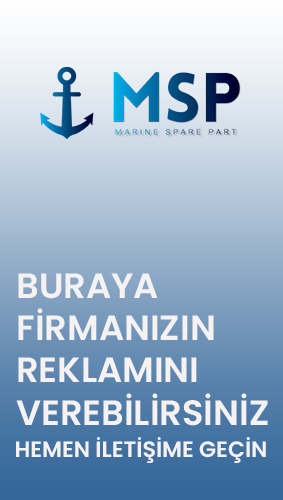| İlan No | 2090 |
|---|---|
| İlan Tarihi | 5 Ekim 2022 |
| Garanti Süresi | 6 Ay |
| Durumu | Sıfır |
pplications
The 2301D-ST is a field-configurable control designed for single-valve steam turbine
applications. This control is configurable to allow it to be easily applied in a diverse
range of turbine applications.
The control can be configured as a replacement for Woodward 2301A or 2301A
LSSC controls, or for use within new turbine applications.
The 2301D-ST includes the following basic turbine control functions:
Speed Control
Start Valve Ramp
Overspeed Protection
Shutdown Logic
Alarm Logic
Platform Diagnostics
Manual Start, Semi-Automatic Start, Automatic Start option
Self Powered Actuator option
Alternatively, the following functions can be configured, depending on application
requirements (I/O limitations may prohibit selecting all listed functions at once):
Process control
Critical Speed Avoidance logic
Remote Speed/Load setpoint
Droop/Isoch Control
KW/Actuator Droop
Load Sharing (with soft load/unload transfer)
SPM-A (Synchronizer) Input
Power Sensor Input (PTs & CTs)
ServLink (DDE)/Modbus®
* Communications
An integral RS-232 communications port allows users to interface with the
2301D-ST through industry-standard Dynamic Data Exchange (DDE) or Modbus
based protocols. Alternatively a contact can be programmed to allow users to switch
between protocols as desired.
A hazardous location version is available.
Description
The Woodward 2301D-ST is a microprocessor based control with integral application software designed for single-valve steam
turbine applications. Like Woodward’s 2301A line of controls, this control is housed in a sheet-metal chassis and consists of a
single printed circuit board. To facilitate unit retrofits, the 2301D-ST’s I/O terminals are located in the same general location as
Woodward’s 2301A line of controls.
This control is designed to perform the core control functions of a small steam turbine package. The application software is field
configurable, allowing it to be configured and modified to meet site-specific requirements.
With more I/O than its predecessor (the 2301A LSSC), the 2301D-ST control also has serial communications, allowing it to easily
interface with the package PLC or plant DCS.
The 2301D-ST is configured and serviced (dynamic adjustments made) via a laptop computer connected to the control’s RS-232
communications port. These configuration and dynamic settings are set, changed, tuned, and saved via a laptop computer and
Woodward’s user-friendly Watch Window software program. This Windows®
based PC program allows users to set and adjust all
application-based parameters, plus upload and download configurations to and from the control.
Control Functions
The Woodward 2301D-ST controls a wide variety of single-valve steam turbines used in electrical generator, compressor drive, or
pump applications.
Turbine Start-up/Shutdown
The 2301D-ST provides configurable turbine start-up scheduling via a Valve Ramp. On start-up, the turbine accelerates according
to the Valve Ramp schedule until the speed control loop takes control of the turbine. The valve ramp can also be used to
shutdown the turbine.
Isoch/Droop Operation
When configured for generator drive applications, the 2301D-ST can operate in either an isochronous or droop load mode. In the
“Isoch” mode, the 2301D-ST controls plant/unit frequency control by maintaining turbine speed. In the “Droop” mode the 2301DST controls generator load. If the generator is connected to the utility bus while in droop mode, the unit speed will be determined
entirely by the bus frequency. If the generator is disconnected from the utility bus, the unit speed will “droop” as the load
increases.
KW Droop Operation
If KW droop is configured, the control uses the output from its integral power sensor to sense and control unit load. The control’s
power sensor output can be monitored via serial communications or through the control’s analog readout. If required, any of the
control’s four relay outputs can be configured as a power level switch to drive auxiliary devices or indicators.
Isochronous Load Sharing
The 2301D-ST includes an analog load sharing network input, which is compatible with Woodward’s 2301A line of controls. The
control’s soft load/unload transfer function can also be configured to rate limit unit loading and unloading.
SPM-A Input
Optionally the 2301D-ST can be configured to accept a ±3 Vdc synchronizing signal. This input is compatible with and intended to
be used in conjunction with Woodward’s SPM-A synchronizers.
Critical Speed Avoidance
The 2301D-ST can be configured to provide one speed range to be avoided for turbine protection. Under normal circumstances,
the turbine speed setpoint will rapidly ramp through the critical speed range.
Remote Speed Setpoint
One of the analog inputs can be configured to remotely control the speed setpoint. The maximum rate at which the speed setpoint
can be changed by the remote input is configurable by the user. The remote speed setpoint is enabled and disabled from a
contact input or Modbus communications.
Process Control
A process control can be configured to receive a remote process input. That process input is compared to a process setpoint to
maintain the desired process operating point. The process setpoint is adjustable by raise/lower contact inputs, Modbus
communications or a configurable remote 4–20 mA setpoint signal.
Communications
The 2301D-ST’s RS-232 port serves two purposes: to configure and service the control, and to interface with the control through
Modbus communications. A Windows based PC program used on a control-connected laptop is used to set and adjust all
application-based parameters, plus upload and download configurations to and from the control. Once the control has been
configured, an optional switch can be used to select ports Modbus protocol. Through Modbus communications, a user can monitor
all turbine-specific parameters as well as control the unit (start, stop, etc.) as desired.
